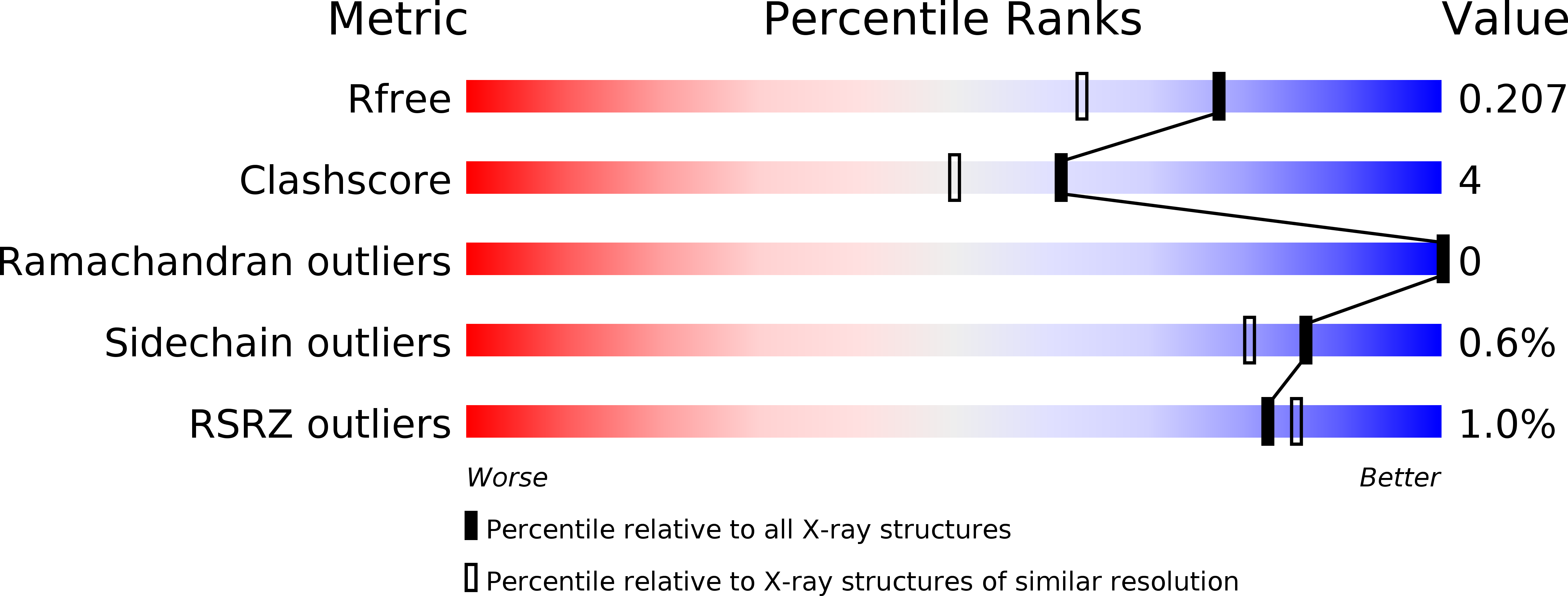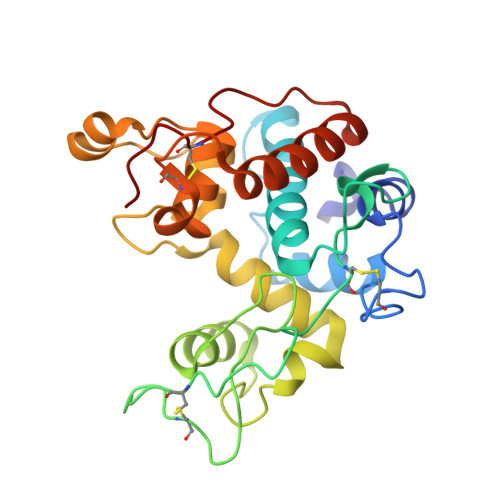Crystal structure and chitin oligosaccharide-binding mode of a 'loopful' family GH19 chitinase from rye, Secale cereale, seeds
Ohnuma, T., Numata, T., Osawa, T., Inanaga, H., Okazaki, Y., Shinya, S., Kondo, K., Fukuda, T., Fukamizo, T.(2012) FEBS J 279: 3639-3651
- PubMed: 22831795
- DOI: https://doi.org/10.1111/j.1742-4658.2012.08723.x
- Primary Citation of Related Structures:
4DWX, 4DYG - PubMed Abstract:
The substrate-binding mode of a 26-kDa GH19 chitinase from rye, Secale cereale, seeds (RSC-c) was investigated by crystallography, site-directed mutagenesis and NMR spectroscopy. The crystal structure of RSC-c in a complex with an N-acetylglucosamine tetramer, (GlcNAc)(4) , was successfully solved, and revealed the binding mode of the tetramer to be an aglycon-binding site, subsites +1, +2, +3, and +4. These are the first crystallographic data showing the oligosaccharide-binding mode of a family GH19 chitinase. From HPLC analysis of the enzymatic reaction products, mutation of Trp72 to alanine was found to affect the product distribution obtained from the substrate, p-nitrophenyl penta-N-acetyl-β-chitopentaoside. Mutational experiments confirmed the crystallographic finding that the Trp72 side chain interacts with the +4 moiety of the bound substrate. To further confirm the crystallographic data, binding experiments were also conducted in solution using NMR spectroscopy. Several signals in the (1) H-(15) N HSQC spectrum of the stable isotope-labeled RSC-c were affected upon addition of (GlcNAc)(4) . Signal assignments revealed that most signals responsive to the addition of (GlcNAc)(4) are derived from amino acids located at the surface of the aglycon-binding site. The binding mode deduced from NMR binding experiments in solution was consistent with that from the crystal structure.
Organizational Affiliation:
Department of Advanced Bioscience, Kinki University, Nara, Japan Biomedical Research Institute, National Institute of Advanced Industrial Science and Technology (AIST), Tsukuba, Japan.


















